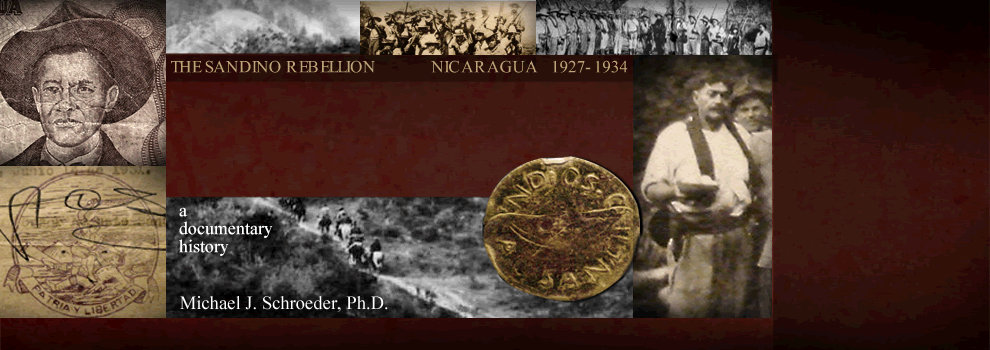|
Gavino Bucardo,
'first class fighting man', goes home to plant a
crop
.jpg) This brief report on an interview with
a rebel soldier on leave from the army
highlights several key features of the year-old
rebellion. For one, its ranks were filled with
campesinos (rural folk), whose livelihoods
depended on planting and harvesting corn, beans,
and other staple crops. Thus, the ranks of the
rebel army would shrink with the coming of the
spring rains. The "oath" refers to the Marine &
Guardia practice of compelling former rebels to
pledge their allegiance to the constitutional
government in Managua.
This brief report on an interview with
a rebel soldier on leave from the army
highlights several key features of the year-old
rebellion. For one, its ranks were filled with
campesinos (rural folk), whose livelihoods
depended on planting and harvesting corn, beans,
and other staple crops. Thus, the ranks of the
rebel army would shrink with the coming of the
spring rains. The "oath" refers to the Marine &
Guardia practice of compelling former rebels to
pledge their allegiance to the constitutional
government in Managua.
Gavino Bucardo's comments about "Jiron"
(General Manuel María
Girón Ruano) are also noteworthy. In the war's first year Girón
ranked among Sandino's top commanders (on the
discipline exercised by Girón's troops at
Bonanza Mines in April 1928, see above; on his
growing estrangement from Sandino, and capture
and execution by the Marines & Volunteers, see
below). The rebels' impoverished material
circumstances as described here also accord with
much other evidence. Finally, the Marine &
Guardia's failed efforts to persuade Bucardo to
ally with them illustrate core campesino values
of autonomy and independence, and underscore the
polarizing dynamics of the war, with both sides
growing increasingly insistent that, for
non-combatants, there was no viable middle
ground. (Photo: unknown Sandinista soldier,
detail of photo of Gen. Manuel María
Girón
Ruano and members of his general staff, April
1928, US National Archives; full photo appears
below).
|

